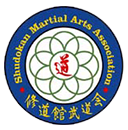Judo: Martial Way or Modern Sport?
By Burklund, RichardFirst published in the Spring 1998 issue of the "SMAA Newsletter"
Judo is at a crossroads today. One path leads to growth and enrichment. The other leads to decline, decay, and demise. The choice is clear; renaissance or regression. What is the cause of this sad state of affairs? It is the conflict between the views of judo as a sport or as budo.
Is judo a sport or budo? The late Mr. Donn Draeger said, "Modern judo is commonly described as a sport, a fighting art, a spiritual discipline, a system of physical education and a recreational activity." Budo and sports have in common regular physical training in specific skills and routines. Sports are designed to provide physical fitness, entertainment and, through competition, the attainment of awards, monetary gain, and/or public acclaim. Budo has as its ultimate goal the perfection of the practitioner's moral and spiritual self.
Mr. Draeger goes on to point out that a true definition of judo is elusive because the narrow interests of a few have been allowed to dominate the scope of judo.1 There is within judo today a growing dissatisfaction with the current situation. This is revealed in decreasing membership in those organizations devoted to sport judo, the continuing lack of substantial success of U.S. judoka in international competition despite all the effort directed to this end, and the growing calls for a return to "traditional judo." When people decide to study budo they usually come with several goals in mind. They often want to learn self defense skills foremost. There is also a desire to improve their health and physical fitness. Finally, there is the desire to improve their mind and spirit. Budo teaches discipline, respect, humility, dignity, and compassion. Most students come to value these metaphysical and esoteric lessons over the physical techniques which they have learned.
There is a clear schism in judo between the sport enthusiasts and the traditionalists. Sport judo today is dedicated primarily to the development of contest champions. The overall goal of championship training produces a very steep pyramid structure to the judo population. Increasingly, only the strongest and most gifted athletes are engaged in regular competition to ascend to the pinnacle of victory. Training is geared to support this elite corps. While it may be said that many people begin training in judo, and even compete at the local level, it is clear that the system is, in some ways, designed to eliminate these people in search of a few champions. In the pragmatic training necessary for victory in this game, self defense training and the development of spiritual growth is often neglected.
In 1889, Dr. Kano Jigoro, founder of judo, said, "Judo is the study of techniques with which you may kill if you wish to kill, injure if you wish to injure, subdue if you wish to subdue, and, when attacked, defend yourself."2 Judo was once widely considered a valid form of self defense training. This is no longer true. Because it is sometmes thought of as an eccentric form of sport wrestling, many people do not take it seriously as a form of self defense. This is especially true of the students of other budo. Yet Dr. Kano's statement makes it clear that he considered judo to be effective self protection. Kano Sensei intended that randori (unrehearsed, free practice) be the primary training method followed closely by kata (rehearsed, formal exercises). Shiai (competition) was clearly last in his priorities.3
We have defined the problem; now what do we do to solve it? I believe that judo is dynamic, versatile, and expansive enough to serve the needs and interests of all who practice it. I also feel the SMAA is an organization which can re-unite the various factions of judo. This is due to the fact that Todd Sensei and the organization promote the following principles:
- Judo is a martial way (budo) for self defense and self perfection.
- The goal of judo training is a well rounded individual, who has experience and skill in competition, kata, and instruction. We aim to make better people not more champions.
- Advancement is to be based upon:
- Age/maturity.
- Time in service.
- Time in grade.
- Potential for increased responsibility.
- Knowledge/proficiency in common tasks/subjects.
- Demonstration of proficiency in written and "hands on" testing.
In the SMAA Judo Division, competition is an optional means of testing one's physical and technical skills and a method of bringing out the best in oneself. Participation in competition is not required.
Kata training includes both form/technique and application. Self defense training is provided in this manner. Kata and randori are given roughly equal weight in the syllabus. The philosophy is that the Gokyo no Waza is the vocabulary of judo; kata is the grammar of the art. [Developed by Kano Sensei, the Gokyo no Waza is a series of 40 fundamental throws, divided into five progressively more difficult sets. -- Editor]
In conclusion, the overall goal of the SMAA is to help in restoring integrity to the martial way of judo by providing a balanced, comprehensive, and robust organization. Judo must focus on its heritage as a traditional martial way by emphasizing randori and kata as the primary training vehicles for the development of the modern day warrior-sage. Shiai must be returned to its proper perspective and cannot be allowed to dominate our thinking and our efforts.
Notes:
- Modern Budo and Bujutsu; Donn Draeger; pg. 112.
- Judo Formal Techniques; Draeger and Otaki; pg. 23.
- Ibid., pgs. 23-31.

